Alternate title: More blown-up stuff
This Broadcast Electronics Fm 3.5A will be thirty years old in April. We should have a party!
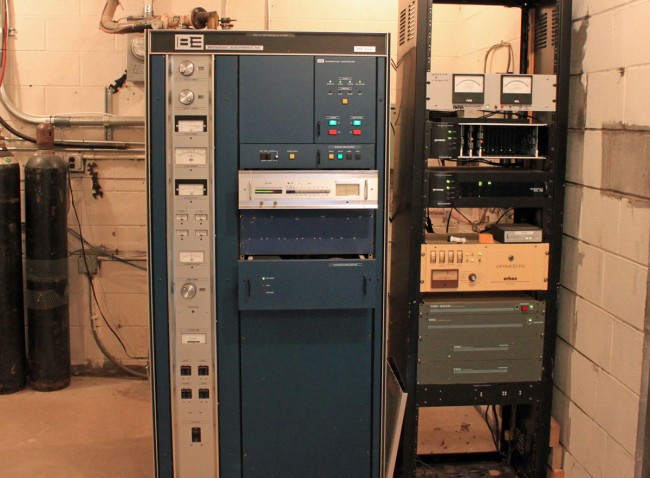
Unfortunately, this transmitter is not doing too well these days. The PA high voltage feed through capacitor has arced over to the PA cavity, causing the station to be off the air.
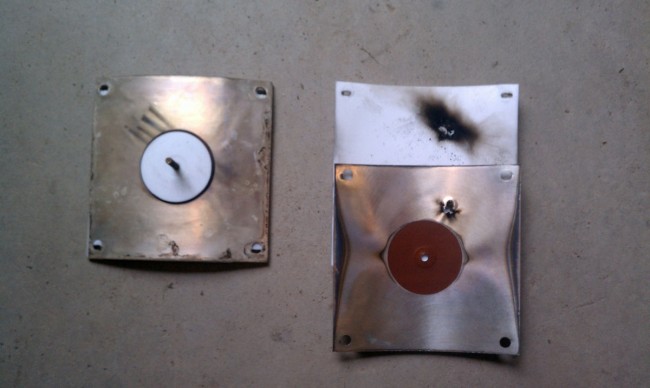
Naturally, this happened over the weekend, parts will not arrive until Tuesday at the earliest, and the station is without a backup transmitter.
Obviously, trouble shooting this was a two-person job. Never work alone on HV equipment. The symptom was the main circuit breaker was tripping after the HV on command. Starting from the transformer end of the HV power supply circuit and working toward the anode of the PA tube, all of the components were tested by isolating each component then turning the HV on. Special care was taken to discharge all components after each test. The capacitors and bleeder resistors were reconnected at the same time. There is too much risk involved with charged 8 KV capacitors and no way to bleed that charge to ground. Everything worked up until the PA cavity was reconnected (without the tube), then the breaker tripped again. Thus, the above feed-through capacitor was removed and disassembled, revealing the damage.
The question is, how long should transmitting equipment last? After all, if one were running a freight delivery company, you would not be driving around in thirty-year-old trucks, would you? No, not if you wanted to stay in business. Like all electro-mechanical equipment; transmitters, consoles, STLs, antennas, computers, etc wear out. A smart plan would be to have a replacement schedule and be putting money into a capital equipment replacement fund. Equipment life varies with the type. Getting twenty years out of a main transmitter is a pretty good service life, going beyond that is pressing one’s luck. Ten years on any one computer is a very long time. Then there are certain transmitter manufactures that drop support on older units, which makes it difficult to keep them operating. Owners and managers need to be cognizant of the age and condition of critical infrastructure. As field engineers, how much time do we devote to keeping antiquated equipment running, or should we even be servicing it at all? As independent contractors, we incur a liability whenever we touch something. Where does the ownership’s responsibility lay in providing safe, functional equipment for their stations? All interesting questions.


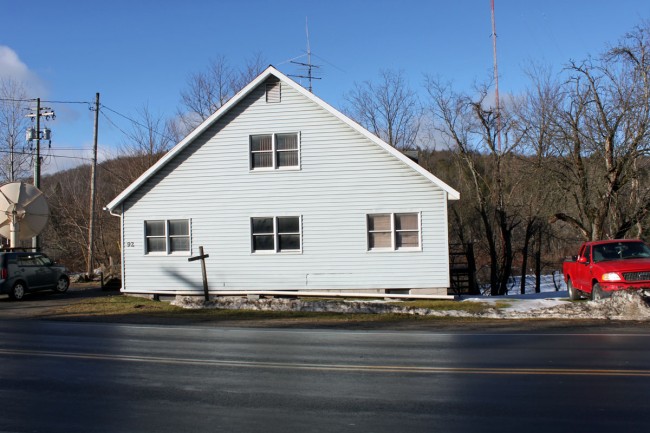
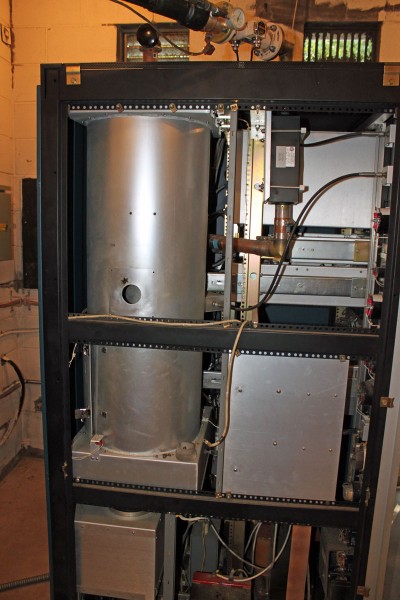
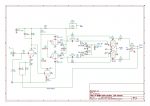
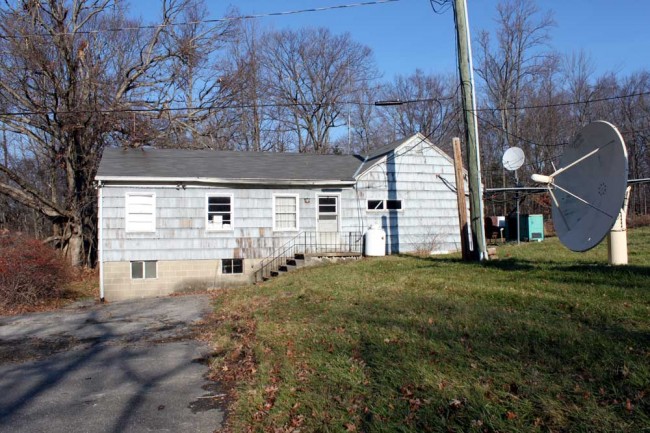
Funny, the 3.5A that I took care of left the IPA drawer out full time too.
Although that 3.5A got replaced, but not by choice. Shortly after the station was sold, a blizzard dumped a bunch of snow into the cabinet through the vent. The new contract engineer said “I could probably fix it, but I really don’t want to keep this thing going anymore.”
I tell my clients to start looking for replacements when they are 10 years old and buy by the time they are 15. Not only are you getting newer equipment (keeping the old as backup), by the 10-15 year point, equipment has advanced enough to where you will be saving money either with more efficent components or easier to service making down time shorter and making more efficent use of your engineer’s time. Several clients have not heeded this advice and found themselves off the air with a long discontinued transmitter that is no longer supported and are then forced into purchasing a new one which is also not a good position to be in.
A lot depends on the transmitter itself (a lot of purpose-built components, or only a few?) and the station’s budget. It would be nice if a little Mom-and-Pop station serving a county seat could get a new rig every 10 – 15 years, but realistically, I have helped transmitters on the air that were older than this one — and some of them are still on the air at twice its age. Given a decent local machine shop and a knack for improvisation, it’s surprising how long some of them can be kept going (even longer if you know a decent transformer rebuilder). Is it worth it? It is if there’s no money to buy a replacement transmitter, but that’s not a winning game in the long term.
As a side issue, though the years, I have tried to track transmitter parts back to the original source when possible. Not so much to undercut the transmitter mfr, they have to make a profit or they’ll drop support (or worse) but so I can get the part when it’s really needed and the manufacturer hasn’t got it. (W.W. Grainger and McMaster-Carr are your friends.)
@Kevin, IPA drawer 1/4 way out is standard operating configuration for any BE FM “A” series transmitter.
@Scott, We try to advise out clients in the same way, some listen, some do not. It is not always the smaller clients that have the oldest equipment either.
@Roberta, there are a few forty+ year old transmitters we maintain in service as main (and only) transmitter. You are correct, generic parts are the key to longevity. Unfortunately, this particular BE part is not made or available, which leads to an expensive retrofit kit, on a thirty year old transmitter. Seems like good money after bad.
We maintain a 22 year old FM30B. The MVDS display doesn’t work any more so there’s no way to tell what the IPAs current is doing. Have to rely on the idiot light on the front. This one uses the same IPA as the “A” seriser. And yes, both IPA drawers are pulled out. Not only that, a fan has been added to each lid at the end of the IPA module to suck more air. Site is at 7200 ft and we need all the airflow possible.
There’s a decommissioned FM 10A in the same room (the other tennant). Same SN# as the FM30B!
The three other transmitters we maintain at that site, 13 year old Harris HT30CDs, are just getting broken in. No way they will be replaced any time soon.
When I took over WFNX there was a very badly abused BE-FM-5-A that had been left to rot with a bad blower motor and other problems once a new Harris Z-5 was put in.
The old Medford site had no heat or AC and the building was saturated with gritty dirt, this left the station with no back up. A new blower motor, a few other tricks and days of intense cleaning restored this fine transmitter to very reliable operation. It was used on the air for a few days when the Harris Z5 was moved to the top of One Financial Center. It was decided to order another Harris Z5 for Boston and finally retire the BE. I’m sure it is enjoying its new life somewhere in rugged Wyoming territory.
We have a BE FM 3.5A here at WMXW. It served as the main transmitter from 1989 until a roof leak allowed water to pour into the top of it in 2006 or 2007. We replaced the controller and APC circuit boards and dried out everything else. It’s been a reliable backup ever since. The main transmitter is now a BE FM-2C, as the TPO is only 650 watts for the station.
Hi Paul, The BE 5 at WSPK ran almost flawlessly for most all of it’s years at Mt.Beacon.The only thing I remember going south was an IPA section failure that kept us safely at 1/2 power for about a week as parts were ordered.
It was the ownersips desision(as I understand it) not to fire up that old Harris since it sucked up so much revenue.
I would be interesting to hear what kind of shape the BE was in when you took it down.
Elliot
The WSPK transmitter was in okay shape when it came out. The problem was the old site owner had done a bunch of concrete work and fine dust got sucked into everything. I found out about this after the fact. Eventually the blower motor, fan motors and other things all started to go bad. Still, I think it was 22 years old when we removed it from service.
Iwant to buy one old transmitter
thanks
Julio